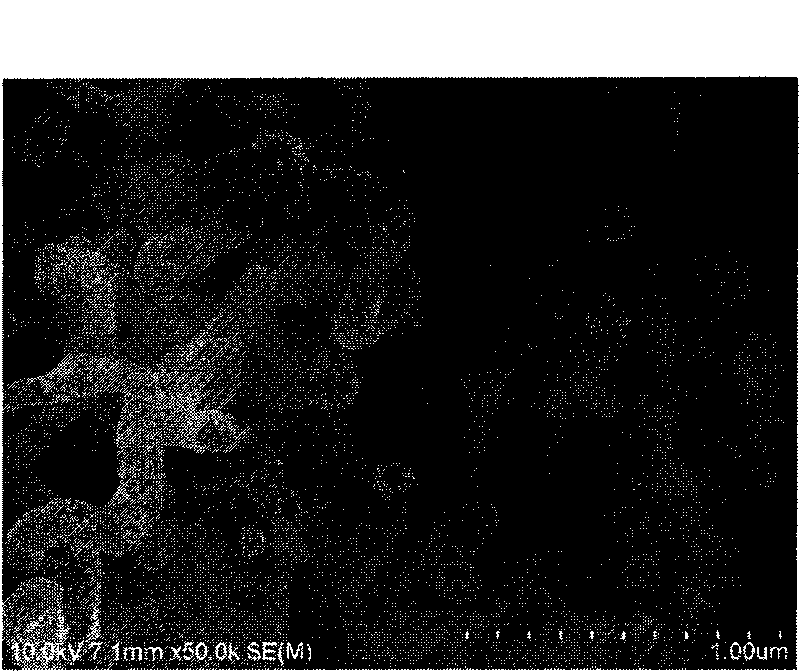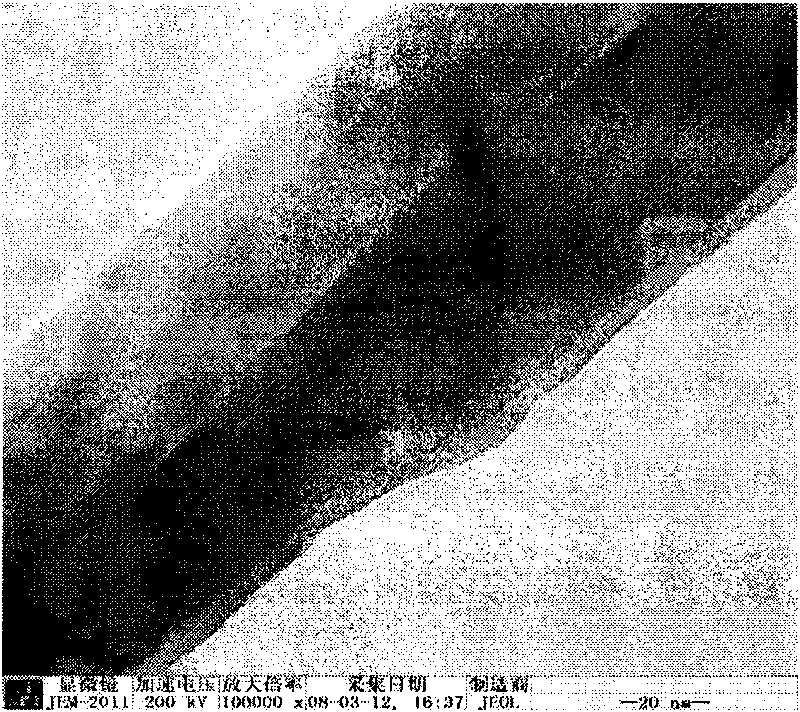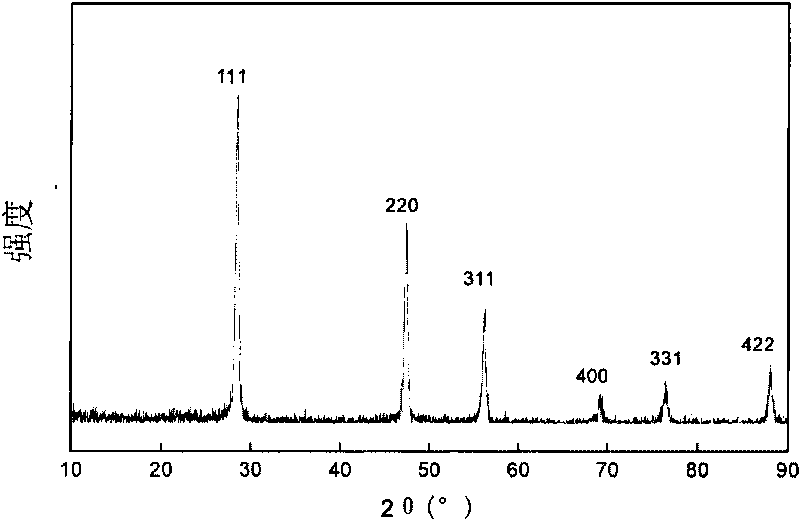Method for preparing one or more of silicon nano power, silicon nanowires and silicon nanotubes by electrochemical method
A nanotube and electrochemical technology, applied in chemical instruments and methods, inorganic chemistry, nanotechnology, etc., to achieve the effect of controllable shape, simple equipment, and uniform particle size
- Summary
- Abstract
- Description
- Claims
- Application Information
AI Technical Summary
Problems solved by technology
Method used
Image
Examples
Embodiment 1
[0066] 75 wt% of SiO with a purity of 99.95% and an average particle size of 0.2 μm 2 The powder is mixed with 25wt% binder (as SiO 2 The total weight of powder and binder is 100%), pressed by mechanical pressure at 5MPa to about 10mm in diameter and 1.1mm in thickness, and heated in air at 1100°C for about 5 hours to sinter the formed SiO 2 The small piece is combined with a conductive cathode current collector as the cathode, and the graphite rod is used as the anode to melt the CaCl 2 As an electrolyte, in an argon environment, the temperature is 800°C, the voltage is controlled by a voltage regulator to perform constant voltage electrolysis, and the cell voltage is 3.0V. After 2 hours of electrolysis respectively, the electrolyzed product was rinsed with 1% by volume dilute hydrochloric acid, water, and absolute ethanol, and vacuum-dried to obtain a product such as figure 1 As shown, it is a curved silicon nanowire with a diameter of about 50 nm and a length of 2-5 micro...
Embodiment 2
[0068] 75 wt% of SiO with a purity of 99.95% and an average particle size of 0.25 μm 2 The powder is mixed with 25wt% binder (as SiO 2 The total weight of the powder and the binder is 100%), pressed by mechanical pressure at 10MPa to a diameter of about 10mm, a thickness of 1.2mm, heated at 1200°C in air for about 4 hours, and the sintered SiO 2 The small piece is combined with a conductive cathode current collector as the cathode, and the graphite rod is used as the anode to melt the CaCl 2 As an electrolyte, in an argon environment, the temperature is 1000°C, and the voltage is controlled by a voltage regulator for constant voltage electrolysis, and the cell voltage is 2.0V. After 4 hours of electrolysis, the electrolyzed product was washed with 1% dilute hydrochloric acid, water and absolute ethanol successively by volume percentage, and vacuum-dried to obtain the product such as Figure 5 As shown, the product is mainly curved silicon nanowires / tubes with a diameter of 5...
Embodiment 3
[0070] 75wt% of nano-SiO with a purity of 99.95% 2 The powder is mixed with 25wt% binder (as SiO 2 The total weight of the powder and the binder is 100%), pressed by mechanical pressure at 15MPa to a diameter of about 10mm and a thickness of 1.5mm, heated in air at 100°C for about 1.5 hours and then heated to 1100°C for 3 hours, and the sintered molded SiO 2 The small piece is combined with the conductive cathode current collector as the cathode, the graphite rod as the anode, and the CaCl 2 +NaCl mixed salt is the electrolyte (wherein CaCl 2 Accounting for 51% of the total weight of the mixed salt, NaCl accounts for 49%), in an argon atmosphere, the temperature is 600 ° C, the voltage is controlled by a voltage regulator to carry out constant voltage electrolysis, and the cell voltage is 2.5V. After 5 hours of electrolysis, the electrolyzed product was rinsed with 1% dilute hydrochloric acid, water and absolute ethanol successively by volume percentage, and vacuum-dried to...
PUM
| Property | Measurement | Unit |
|---|---|---|
| diameter | aaaaa | aaaaa |
| diameter | aaaaa | aaaaa |
| length | aaaaa | aaaaa |
Abstract
Description
Claims
Application Information
 Login to View More
Login to View More - R&D
- Intellectual Property
- Life Sciences
- Materials
- Tech Scout
- Unparalleled Data Quality
- Higher Quality Content
- 60% Fewer Hallucinations
Browse by: Latest US Patents, China's latest patents, Technical Efficacy Thesaurus, Application Domain, Technology Topic, Popular Technical Reports.
© 2025 PatSnap. All rights reserved.Legal|Privacy policy|Modern Slavery Act Transparency Statement|Sitemap|About US| Contact US: help@patsnap.com



